This is the Tamiya 35 026-500 kit in 1/35 scale, of the ‘German Jerry Can set’.
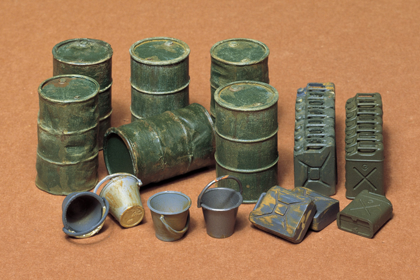
Manufacturer
Where I got it
- Hobbymesse (November 2019)
This is the Tamiya 35 026-500 kit in 1/35 scale, of the ‘German Jerry Can set’.

This is the Tamiya 35 315 kit in 1/35 scale, of the ‘German Jerry Can set (Early type)’.
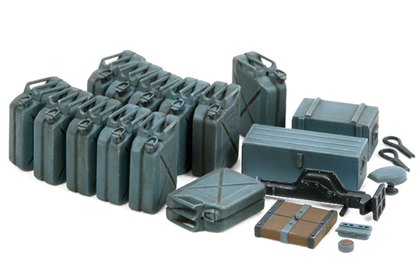
Early-type cans were seen from the Polish campaign to North Africa and the beginning of the Russian campaign, and some were continuously used until the latter half of the war.
This is the Dragon 6904 kit in 1/35 scale, of the ‘German DAK 15cm s-IG.33 aud Pz.Kpfw.III’.
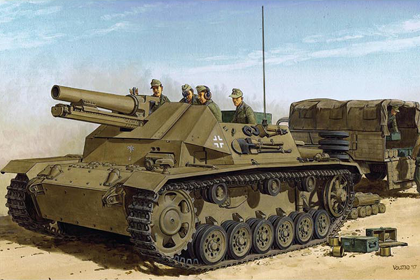
Field Marshal Erwin Rommel was seeking heavy artillery mounted on tracked chassis because horse-drawn or truck-drawn howitzers were impractical in the desert.
This SPH was used by the Deutsches Afrika Korps, specifically the 90 leichte Infanterie-Division, in North Africa. It first saw action in September 1942.
This is the Dragon 6730 kit in 1/35 scale, of the ‘German Wittmann’s Command Tiger I, Pz.Kpfw.VI Ausf.E’.
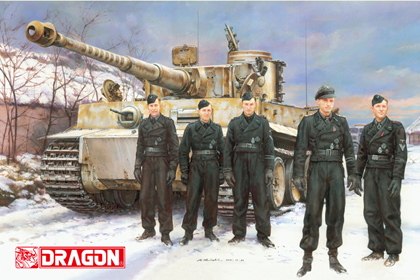
He cut his teeth on the Eastern Front with a StuG.III, and later he took command of a Tiger I in time for combat during Operation Citadel at Kursk in July 1943.
This is the Tamiya 35 180-1100 kit in 1/35 scale, of the ‘German Tank Engine Maintenance crew set’.
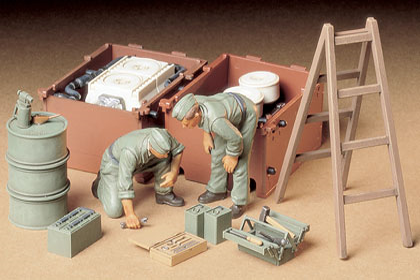
This is the Trumpeter 00389 kit in 1/35 scale, of the ‘German Bergepanzer IV, Recovery Vehicle’.
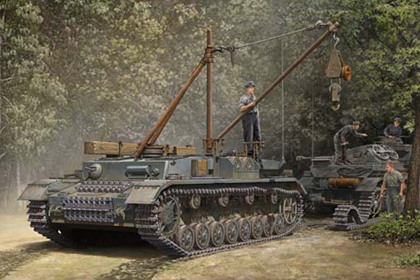
Bergepanzer IV : A recovery vehicle, essentially a turretless Panzer IV chassis fitted with a crane. In May 1944 Bergepanzer 36 stared being built.
This is the Zvezda 3641 kit in 1/35 scale, of the ‘German Panserkampfwagen IV, Ausf. E’.

The Panzer IV was the most widely manufactured German tank and the second-most widely manufactured German armored fighting vehicle of the Second World War, with some 8,500 built.
The Panzer IV chassis was used as the base for many other fighting vehicles, including the Sturmgeschütz IV assault gun, Jagdpanzer IV tank destroyer, the Wirbelwind self-propelled anti-aircraft gun, and the Brummbär self-propelled gun.
This is the MiniArt 35169 kit in 1/35 scale, of the ‘German Pz.Kpfw.III Ausf. D’.
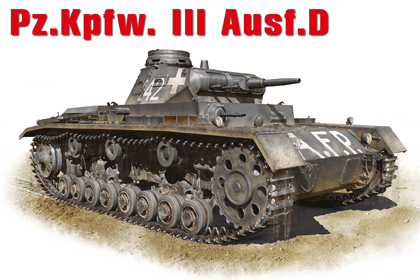
The official German designation was Panzerkampfwagen III Sd.Kfz.141 (abbreviated Pz.Kpfw.III) translating as “armoured fighting vehicle”. It was intended to fight other armoured fighting vehicles and serve alongside the infantry support Panzer IV.
From 1942, the last version of Panzer III mounted the 7.5 cm KwK 37 L/24, better suited for infantry support. Production of the Panzer III ended in 1943. However, the Panzer III’s capable chassis provided hulls for the Sturmgeschütz III assault gun until the end of the war.
This is the Trumpeter 09542 kit in 1/35 scale, of the ‘German Super Heavy StuG E-100’.

Work on E-tanks was abandoned before the end of WWII.
This is the Tamiya 35 233-3000 kit in 1/35 scale, of the ‘German Flakpanzer IV Wirbelwind’.

The Panzer IV’s turret was removed and replaced with an open-top, nine-sided turret that housed a quadruple 2 cm Flakvierling 38 L/112.5. A closed-top design would have been preferable, but this was not possible due to the heavy smoke generated by the four anti-aircraft guns. The shape of the turret earned it the nickname Keksdose (“Biscuit Tin”).
The combination of armor and rapid fire from the four guns of the Wirbelwind made it very effective against lightly armoured ground targets such as trucks and armored cars; infantry were particularly vulnerable.
This is the Tamiya 35 017-2800 kit in 1/35 scale, of the ‘German 88mm Gun FlaK 36/37’.
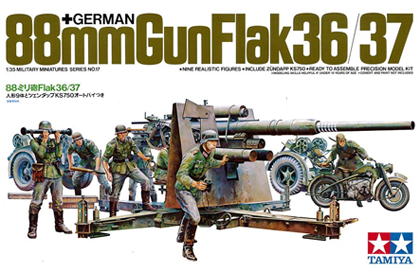
The 88mm gun (commonly called the eighty-eight) was a German anti-aircraft and anti-tank artillery gun from World War II. It was widely used by Germany throughout the war, and was one of the most recognized German weapons of that conflict. Development of the original models led to a wide variety of guns.
The name applies to a series of guns, the first one officially called the 8.8cm FlaK 18, the improved 8.8cm FlaK 36, and later the 8.8cm FlaK 37. FlaK is a contraction of German Flugzeugabwehrkanone meaning “aircraft-defense cannon”, the original purpose of the eighty-eight. In English, “flak” became a generic term for ground anti-aircraft fire. In informal German use, the guns were universally known as the Acht-acht (“eight-eight”).
The versatile carriage allowed the eighty-eight to be fired in a limited anti-tank mode when still on its wheels; it could be completely emplaced in only two-and-a-half minutes. Its successful use as an improvised anti-tank gun led to the development of a tank gun based upon it. These related guns served as the main armament of tanks such as the Tiger I: the 8.8cm KwK 36, with the “KwK” abbreviation standing for Kampfwagenkanone (literally “battle vehicle cannon”, or “tank cannon”).
This is the Aber, Exclusive Edition photo etch sets for the ‘German Sd.Kfz.186 Panzerjäger (Jagdtiger)’ from Tamiya.
Detail set |
Tamiya |
||||
| (35 K07) | Exclusive edition | 35 295 | |||
Source: Aber